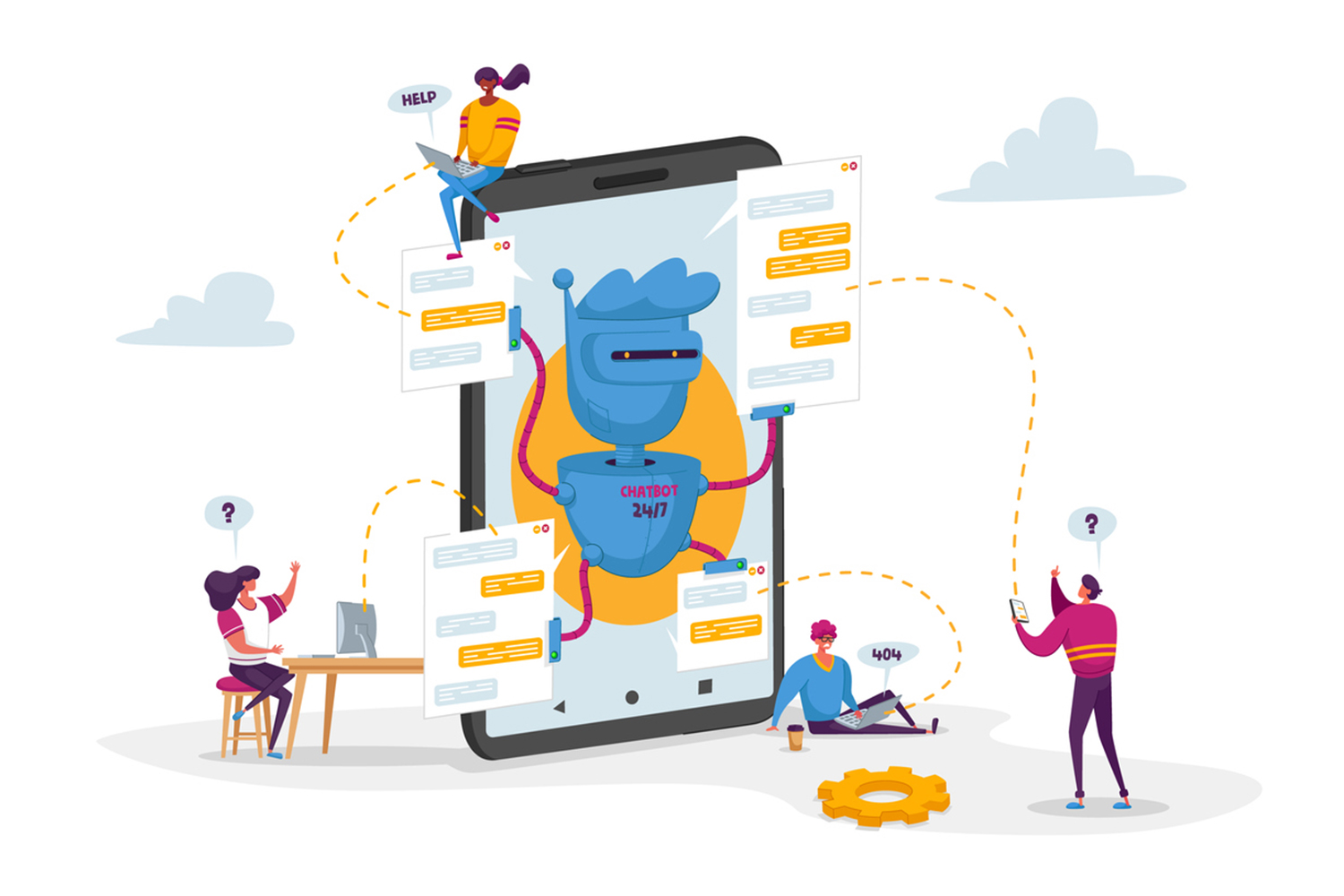
Even if it may feel like it in view of the current hype: AI tools in the field of text production do not come as a surprise. The IT industry has been tinkering with corresponding programs for many years. Little by little, they have been fed billions of training data. Now they are “suddenly” here, all at once it feels, flooding the Internet and society with the promises (or threats) of a new age. Whether it’s ChatGPT, Jasper, Frase, Mindverse or Writesonic, they all have the same goal at their core: using complex algorithms, they should be able to process language so well that the result meets human standards – or, in the best case, even exceeds them.
Pointless debates on principles
Of course, when we say “best case scenario,” it’s a dangerous word in the current discussion around AI texting tools. Are these programs good or bad for our society? Are they a risk or a long-awaited salvation? Will they put copywriters and translators out of work in droves? Or -? Stop. We don’t even want to get into pointless debates about principles. The fact is that AI text tools are here to stay. And they can already do a lot.
We should therefore come to terms with their existence and take a close look at what we can use them for – and rather not for. In this magazine article, we show how we should view these tools critically, but why the apocalypse of human language is not imminent. Because AI text tools will also become immensely valuable for us in the marketing industry. Even – read this and be amazed – for copywriters.
This program “can do something with text”: A differentiation
AI text tools are springing up like mushrooms and it’s easy to lose track of them all. We won’t try to discuss individual programs here, as the proliferation is now too great and our magazine is not the right place for that. What is worthwhile, however, is to take a look at what types of tools there are. After all, two people (or machines) are not always talking about the same thing when it comes to AI text tools. Very roughly, we should at least distinguish these AI text competencies:
- Text comprehension
- Text translation
- Text editing
- Text production
We will not look at translation in more detail here. Although it is causing major upheavals in the world of communication, it is only indirectly relevant for us at Content Garden. In addition, it functions in part according to different technical laws than the other three areas: While in translation the basic command to the AI is always to convert language A into language B, far more complex mechanisms often take effect in understanding, editing and production. The principle of “I tell the AI what I want and it spits it out” only sounds simple at first glance, but the cheese is not eaten that quickly. Reassuring, in a way. Because this is where we as human users come into play.
Prompting: the new key skill?
The so-called prompting (actually a term from behavioral therapy, which is now applied to AI) refers – in very simplified terms – to the process of the AI receiving a linguistic instruction from the user as to what it should generate and output. So a prompt is basically a command in text form. It can be a single sentence, but it can also be multiple sentences, complex prompts with lots of details, or even just a few keywords. The AI’s “associative memory” links the contents of the prompt with the existing training data – and generates corresponding output.

Sounds simple? Think again. In practice, this is where the big challenge lies when dealing with AI tools, but at the same time, the beautiful necessity to bring in our human creativity. This is not only true for copywriters, but for everyone who wants to use AI for creative purposes. However, especially for people who work with text, a great potential reveals itself here: after all, the prompt must also be in text form; and the more accurate, targeted or even innovative this command is, the better the result will correspond to what was hoped for.
Thus, the question of how to “compose” (good) prompts is certainly the most exciting and ultimately decisive thing for the text industry when dealing with AI tools. Only those who can prompt well will be able to work well with an AI and use it meaningfully. Developing skills in this regard, gaining experience, and merging the possibilities of AI with one’s own talents will be inevitable for copywriters in the future. In other words: prompting could develop into a new key qualification in the creative industry.
AI text tools at Content Garden: To what extent is this imaginable?
How relevant and accurate the capabilities of an AI program are always depends on the area of application. If we look at the four areas of expertise mentioned above, it quickly becomes clear that all of them have relevance in marketing. As far as we at Content Garden are concerned, AI penetrates directly into our core activities with its capabilities in text comprehension, text editing and text production. But where is the practical application now? And where are the limitations (at present)?

Accurate: Why we let the centaurs into the garden
The centaur concept, i.e. the targeted collaboration of humans and AI, is by no means new. The basic idea is that a fusion of human and artificial intelligence should be able to deliver the best possible result, in other words: outperform both the human working for itself and the AI working for itself. In some restricted and completely programmable areas, this idea is now obsolete (for example, “centaur teams” of humans and computers are no longer necessarily better than the AI operating alone).
However, wherever highly dynamic circumstances prevail, where genuine originality is required and where unconventional thinking is needed, the human+AI team is currently still ahead. And that’s ahead of AI alone, but also – watch out – ahead of humans doing without AI. And that’s why we let the centaurs into our (Content) Garden.
“AI will speed up text production and identify gaps”.
It’s clear that we need to use modern technologies to stay competitive. And hand on heart: many functions of AI text tools genuinely sound like they make work easier. They can support us in the creative process and, in the best case, efficiently relieve us of a tedious part of the work. “We can assume that AI text tools will help us in many situations,” our COO Stefan Huber also predicts.
“They will speed up text production, point out gaps in research, sometimes provide new input. AI will also be helpful for more mechanical tasks like testing different headlines. On the other hand, we can rather not expect completely new ideas from it, because the AI feeds its productivity only from existing data. And as we know, there is already a huge amount of content on almost every topic due to the many content marketing efforts of companies. When AI makes use of it, it’s not innovative or fresh. For innovation and also for quality control, it certainly still needs the human behind and with the AI.”
What does this mean in practice?
Under the basic assumption that a “centaur model” is the future, we took a look at where and how AI text tools could already be useful for us now or in the near future. And we found plenty, from briefing to final review:
- #1 Help with research: Here we can let the AI support us so that we don’t miss any important points. The AI could also research relevant keywords or create a summary from the researched data.
- #2 Capturing briefings and customer material: Especially when a lot of material has been delivered, the AI could elaborate and summarize the key messages so that we can recognize the red thread more easily and quickly. The material can be prepared in a structured and reduced way.
- #3 Create outlines: We can give the AI an idea for a text and then receive an outline from them (for example, a table of contents or a specific suggestion for the text structure).
- #4 Provide inspiration: The AI can enrich our drafts or thought shards with further suggestions that we use as inspiration. This improves our drafts and helps us discover approaches we didn’t know or see before. Writing blocks may also be solved by such inputs.
- #5 Production of certain text parts and text types: For text components such as headlines, subtitles, calls-to-action or “foil-like” text types such as press releases, suggestions could be created by the AI. SEO-optimized suggestions or variations of best performers could also come from the AI. In addition, the AI could create derivations from a more extensive text type to a smaller one – a classic example is the generation of a social media post from a blog post. Retexting into Simple Language is also efficiently possible using AI. We could then continue to work from the AI suggestions and build on them to create the final versions.
- #6 Optimize texts: Texts produced by us could be improved by optimization suggestions from the AI. For example, the AI can explore alternative formulations, suggest text shortening, emphasize aspects more strongly or close thematic gaps.
- #7 Error checking: AI text tools will also help us in a purely formal sense. Error detection and related correction suggestions, also stylistic corrections and other aspects of proofreading can be partially covered by AI.
These points are just a few examples of how artificial intelligence could be useful for us in text production or even crucial in terms of competition. But what about the flip side? What can AI text tools not (yet) do, in other words: Why is the centaur team human/machine probably still better than the AI producing alone?
Human – All-too-human – Inhuman
When we talk about the limitations of AI text tools, we should keep in mind that even today’s possibilities were perceived like science fiction some time ago. Even now, defensive stand-up phrases like “After all, an AI can’t feel like a human…” still circulate in many places. That may be true, but in certain areas of application, the result is still amazingly human. All too human, perhaps – because this is precisely one of the biggest limitations of these tools: they need human data from which to draw.
Their algorithms rely exclusively on existing knowledge; new knowledge and new skills must always come from humans. In addition, timeliness is never completely achievable (for example, ChatGPT’s training data only extends to the year 2021), critical thinking cannot be programmed, and existing (linguistic) structures are simply adopted by the AI. As a result, an AI ultimately remains inhuman. At Content Garden, we therefore believe that AI text tools are not (yet) relevant in some things, or do not have the sufficient capabilities to help us here for the foreseeable future. A few examples:
- #1 Strategic planning: AI text tools don’t have our concrete experience values from daily business. Therefore, they will tend to be of less help in the strategic component – such as designing campaigns, editorial plans, or applying in-house experience data.
- #2 Original approaches: When unconventional thinking, new methods, and fresh ideas are needed, we’d better not rely solely on AI. An AI text tool can be surprisingly creative, but not original in the true sense. It can provide inspiration, but the truly new must inevitably come from humans.
- #3 Read between the lines: Want an example of where AI is limited? For example, a briefing must be extremely good and precise for the AI to implement it on its own or even summarize it in a meaningful way. The AI text tool cannot read between the lines, nor does it know the history between us and the client.
- #4 Critical text types and topics: Some things may be too difficult for an AI text tool to understand and produce at the moment. The more complex, timely, or specific a topic, the riskier it is to rely on AI. Training data and contextual knowledge are still lacking for certain circumstances, other topics can only be tapped based on personal experience, still others require in-house knowledge of a text type, mechanics, or environment that is simply unknown to AI.
- #5 Refinement and control: we believe that human control and editing of all texts will still be necessary. There are several reasons for this assessment. Just a few examples: Any AI is automatically subject to the bias that it sometimes adopts errors or discriminatory structures from its training data. It can only react inflexibly to (linguistic) currents. It only knows the logic of the training data, not the erratic of the real world. She lacks mental concepts like space and time. Moreover, it can never make personal assessments and process its own empirical values. Therefore, a text produced by an AI text tool should always be critically read and improved by us. Not least because of the human touch that should be noticeable in our texts, it is currently hardly conceivable for us to have entire texts created only by an AI.

As a reminder, it is literally a tool
Hopefully, one thing has become clear by this point: We at Content Garden are convinced that we need to make use of artificial intelligence in our work with texts. The partial unease with which AI programs are currently eyed may have its justification in some respects. Nevertheless, artificial intelligence will not displace all text creators. But text creators who use AI will displace text creators who do not use AI. Why? Because a tool is a tool. People have been inventing tools for thousands of years. And as with any tool, the personal result depends on how well you can use it.
Conclusion: The machine learns. Humans have to learn along with it.
The bottom line is that what AI text tools do doesn’t even cross the line of what has long been conceivable. After all, a chatbot that writes a love letter in my place is no different than Cyrano de Bergerac or any other ghostwriter. Authentic? A matter of opinion. Honest? It just depends on whether you play with open cards. Qualitative? Obviously. Stopping? No. So let’s do the only sensible thing: pick up the tool, learn its use, and use it.
Finally, we must honestly concede: at this point, no one can seriously predict how the development of AI text tools will continue. The ideal case would be that new inspiration, more efficiency and better quality emerge from the centaurian interplay between man and machine. At any rate, we at Content Garden will be eagerly contributing our creative share.